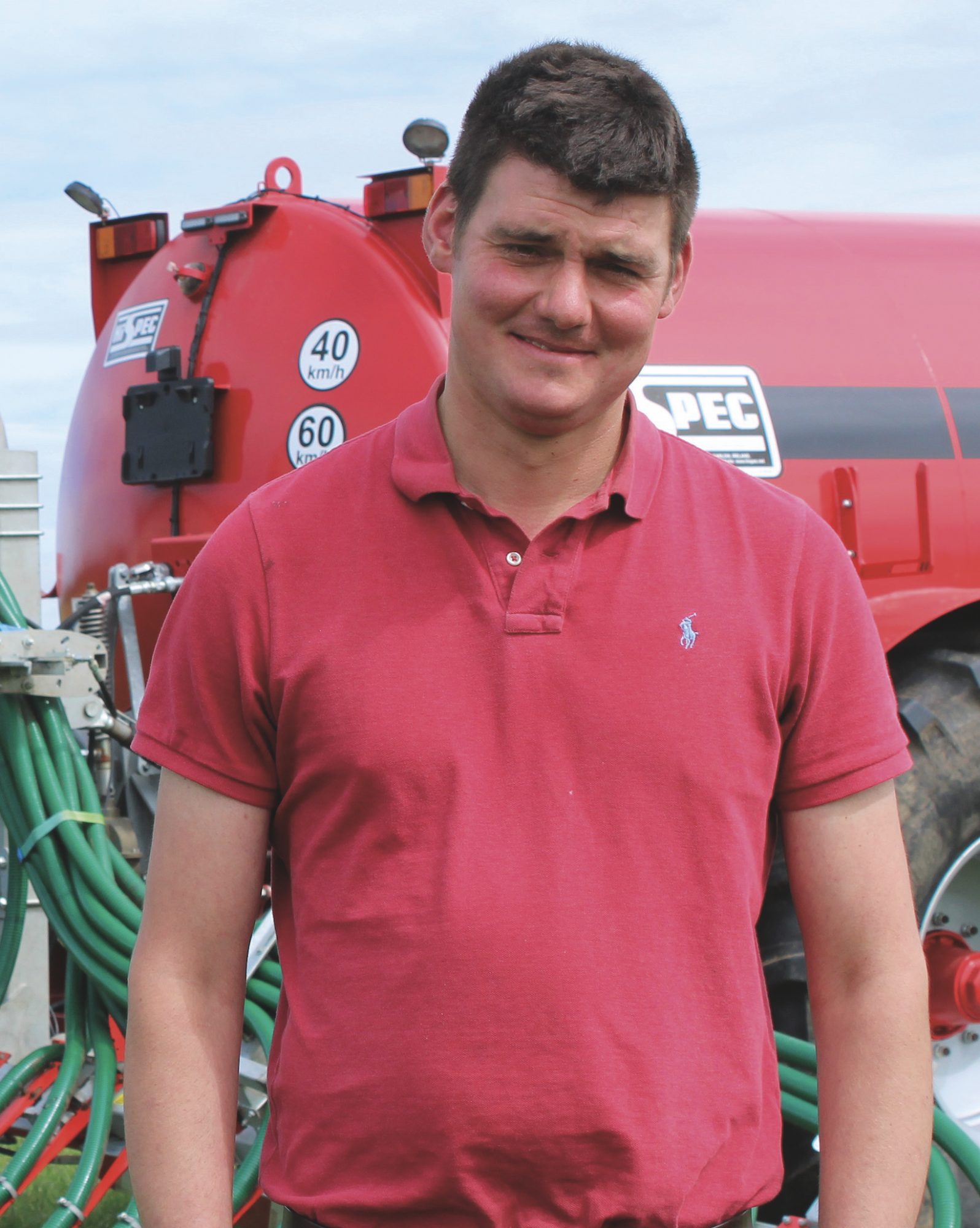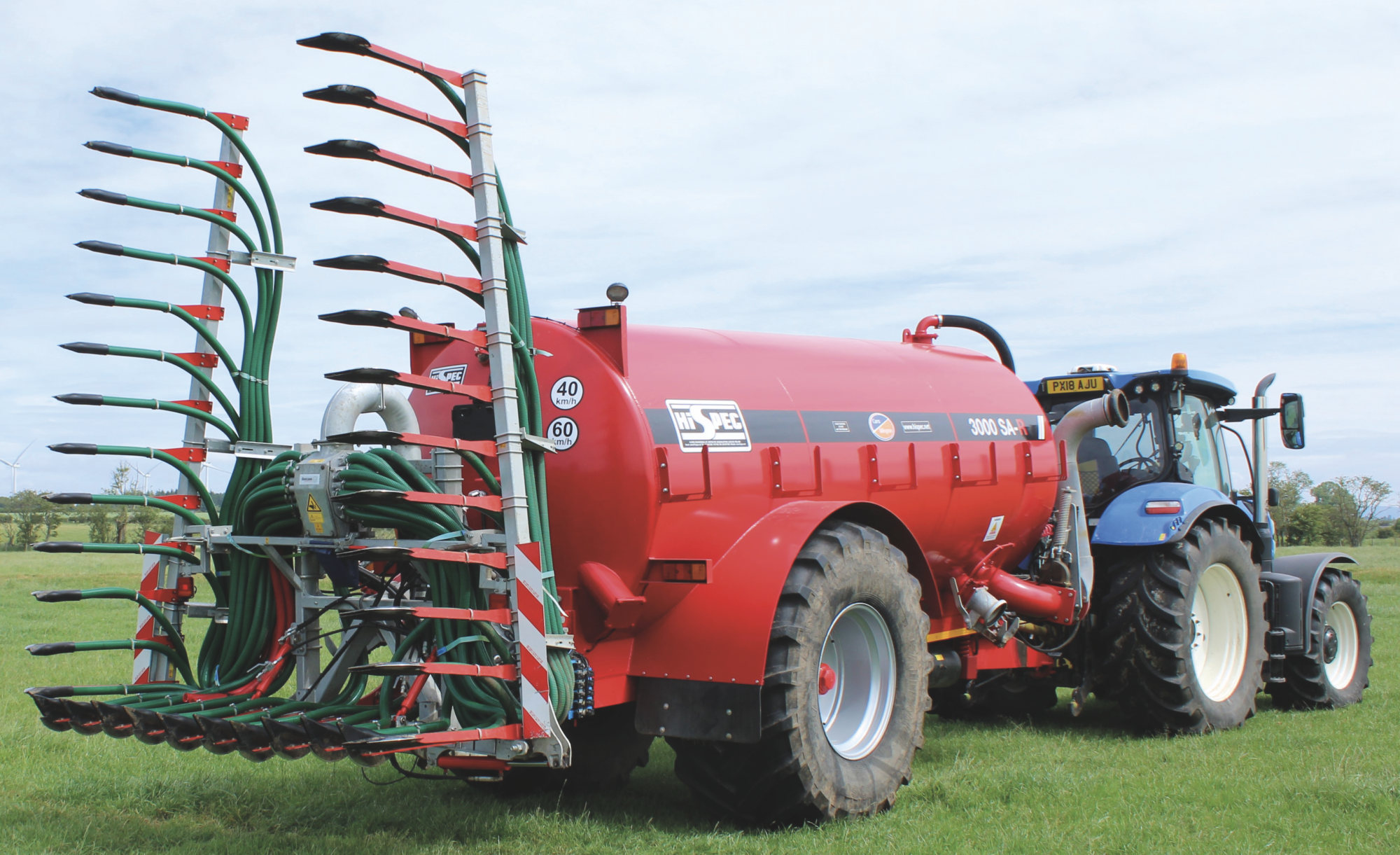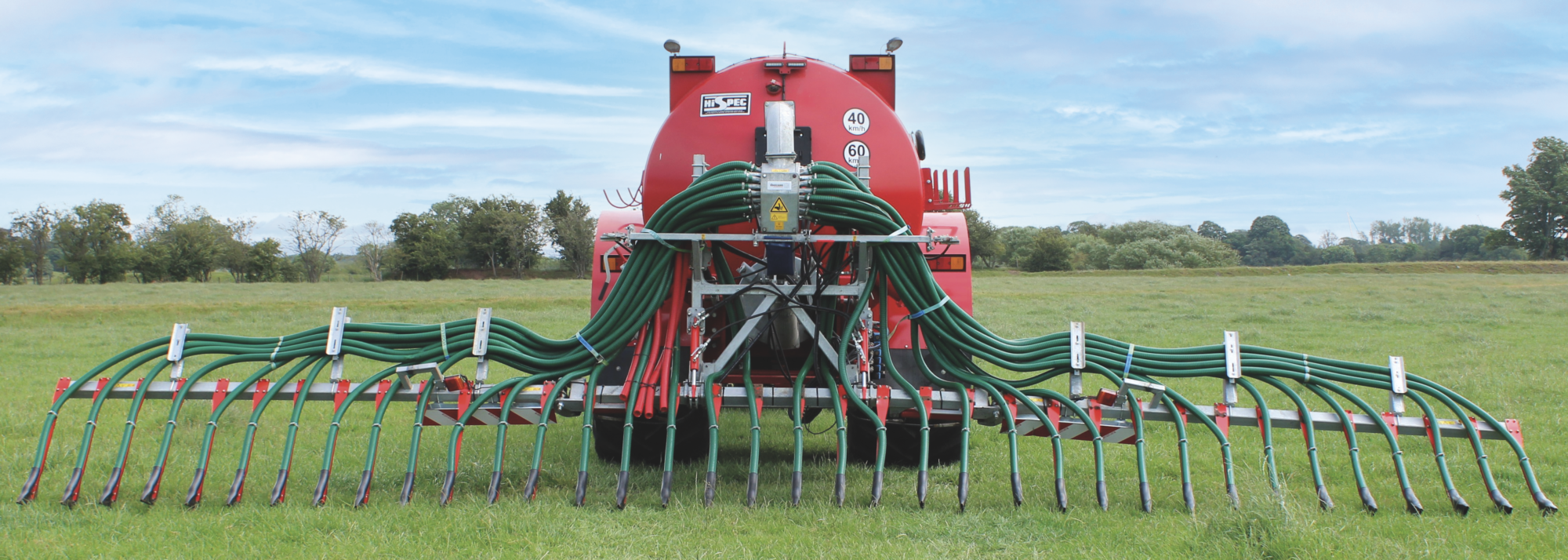Trailing shoe offers whole farm benefits
2nd August 2021
Jonathan Armstrong has transitioned from a splash plate to the Vogelsang 9m UniSpread trailing shoe. The new technology has enabled him to apply slurry from his herd of 320 Holsteins beneath the grass canopy for the first time, which has improved his silage and reduced his use of inputs.
The UniSpread is mounted on a 3,000-gallon HiSpec tanker, which is used to apply slurry throughout the 750-acre family farm near Longtown, on the Scottish border. “Me and my twin brother Thomas are the fourth generation here, and we farm in partnership with our parents, Mark and Alison,” explains Mr Armstrong. The farm has grazing land for the herd and 250 acres of silage land. There is a further 100 acres of maize and 180 acres of wheat and barley which he also applies slurry to. “We used a splash plate, but we wanted to be more accurate and harness more of the nutrient value from our slurry, so we invested in the new trailing shoe a year ago.”
The applicator can operate as a dribble bar or trailing shoe and can be attached to a tanker or an umbilical system. It is compact and easy to mount directly behind a tanker using a 3- or 4-point hitch. The plug-and-play system means it comes fully assembled to reduce any tricky or tedious set up requirements. “It is a very simple machine to operate, and it was fitted very quickly to the tanker. It also has the benefit of only needing minimal hydraulics, just two double acting spools and one free- flow return,” says Mr Armstrong. This design makes it very easy to retrofit to almost any tanker with minimal fabrication. “Ours was supplied by Carrs Billington, who were able to help us set it up very quickly. It is a good fit to our tanker and the mixture of land we have.”

Jonathan Armstrong
Mr Armstrong could have chosen a 12m or larger boom width, but the 9m width offers operational benefits. “I believe we have a good match to the tanker which is important to make sure we are working efficiently. The 9m boom is also easy to manoeuvre, and I can raise the trailing shoes at the headland or if the conditions are good, I can just turn and follow the curvature,” he explains. Unlike some trailing shoes, Vogelsang’s design anchors the neck of the shoe to the spring steel bars, and uses two bolts, which makes for a sturdier construction that is capable of following the ground contours more accurately. “It is reassuring to know that the design is more resilient, and the build quality will absorb the lumps and bumps of the land,” he adds.
Resilience is a factor that Vogelsang clearly considered in the design of the shoe. Some may fear that because the shoe is digging into the ground that it is more likely to sustain damage. However, the tip of the UniSpread shoe is longer, providing a longer life and protecting the body of the shoe. “The design is good because it parts the grass and creates a very small groove for the slurry to sit in. This means that less slurry is contacting the leaf and is instead being applied directly to the soil where we want it,” Mr Armstrong says.
The model shares the same trailing shoe design as the brand’s BlackBird range. The design was developed by measuring the flow and behaviour of liquid manure in flow simulations. The beak-like elongated shape guides the flow of slurry at the outlet to make distribution more accurate and even. The pointed wearing edge cuts into the ground without damaging the sward. “The boom is easy to lift, and I can raise it up on undulating land, so it doesn’t dig in and damage the grass,” he comments.
Mr Armstrong tests his slurry twice a year and also has an annual soil test carried out by Hutchinsons agronomist, Jim Clarke. By first understanding the N, P and K values in the soil, he is able to better measure the amount of slurry that is needed in each field. “We have arable crops as well as grassland, so by working with Jim, we are able to find the right balance of slurry for the crop – and with the new trailing shoe, we know that we are applying it onto the soil. This helps us to manage the nutrient levels in the soil and the amount of N that is available to the plant,” says Mr Armstrong.
The consistency of the slurry is important to Mr Armstrong, who wants to spread as evenly as possible. The UniSpread distributor has a macerator that shreds
fibrous materials to provide the homogeneous consistency he requires. At the other end of the applicator the ‘S’ shaped boot of the trailing shoe is designed to provide an even 6kg of pressure per foot. The curved shape also makes the slurry discharge more accurate which helps monitor the amount of slurry being applied. “There is no comparison between this and the splash plate we used to use. By using a trailing shoe, we have been able to make the most of the agronomic advice from Jim and put more nutrients into the soil,” he says.
The environmental benefits of trailing shoe and dribble bar technology has led to the government’s plan to ban all splash plates from 2025. Defra’s Clean Air Strategy also dictates that all slurry should be covered from 2027. Mr Armstrong is ahead of the legislation and is already seeing the benefits.
“The smell is the first improvement – it barely smells at all. The more important improvement is the quality of our silage. We used to see slurry in the silage because of the uneven distribution with the splash plate. This was particularly bad in windy weather. Now we know the slurry is being applied below the canopy,” he explains.
Nutrients are lost when slurry is left uncovered and when it is spread into the air using a splash plate. The trailing shoe protects the grass and harnesses the nutrient value of the slurry by applying directly to the soil. The spacing of the shoes also helps to apply the slurry at optimal intervals in the field. The 40 outlets of the 9m model with a 25cm spacing make it well suited to both grassland and arable application. “It helps us to use more slurry in the right places and there is something very satisfying about seeing the uniformity of the lines it creates in the grass,” he reckons.
The farm is using fewer inputs since changing to the trailing shoe. After a full year of use Mr Armstrong has been able to reduce his bought in N by 25kg per acre. “We were applying 100kg before we started using the trailing shoe, but now we have been using it for a year we can see the N values in the soil have risen so we have cut back on our bought-in N,” he says.
He now spends less time spreading and uses more slurry. Three cuts are taken for silage with a slurry application after each and one application is made directly after the arable crop is harvested. “On a hot day, using the splash plate we used to lose most of the nutrients before it could get to the soil. This was made even worse in windy conditions. The other benefit is the width we spread at now. The splash plate would struggle to give us 6 metres width and it was slow going. Now we are spreading at 9m widths, and I can travel faster too.”
The benefits of the technology are being seen throughout the farm and Mr Armstrong is soon to have the land Terra-mapped. This will provide more accurate soil analysis and the data needed to measure the optimum amount of slurry for each field. “We have moved on a lot in the last few years and with new technology we are able to take on more ourselves and farm more accurately. This is definitely bringing our costs down and we
hope that it will also have a positive impact on milk yield in the future too,” he concludes.


